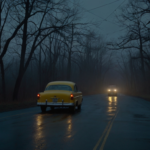Nestled among the ancient waterways of Xochimilco, a short distance from the bustling streets of Mexico City, lies a place that seems as though it has been plucked from the most unsettling of nightmares. This is the Isla de las Muñecas, or the Island of the Dolls, a small chinampa (a floating garden) that has become one of the world’s most haunting and enigmatic destinations.
The island’s eerie atmosphere is immediately apparent to any visitor, with thousands of disfigured, decaying dolls hanging from the trees, their lifeless eyes staring blankly into the void. These dolls, which range from traditional to plastic, to just fragments of what they once were, have been collected and displayed over the decades, giving the island a deeply unsettling appearance. But the story of how this macabre collection came to be is even more chilling than the sight of it.
The Guardian of Souls: Julian Santana Barrera
The tale begins with the island’s caretaker, a reclusive man named Julian Santana Barrera. According to local lore, Julian discovered the body of a young girl who had drowned under mysterious circumstances in one of the island’s canals. Near her body, he found a doll floating in the water. Struck by a profound sense of sadness and perhaps guilt, Julian hung the doll on a tree as a mark of respect and to appease the girl’s spirit.
However, Julian became haunted by the belief that the girl’s spirit was not at rest. Tormented by eerie whispers, footsteps, and anguished wails in the night, he felt compelled to protect himself by hanging more dolls, which he believed would ward off evil spirits and pacify the girl’s restless soul. Over the years, Julian dedicated his life to the island, continually adding to his macabre collection by scavenging dolls from the trash and trade with those who visited.
The Island Today
Decades have passed since Julian Santana Barrera began his solitary vigil, and the Island of the Dolls has transformed into a peculiar attraction for those drawn to the macabre. Julian himself passed away in 2001, with reports suggesting he met the same fate as the girl he sought to appease, found drowned in the very canal where he believed her spirit still lingered.
Visitors to the island often bring their dolls to add to Julian’s haunting collection, further entwining the reality of the island with its myths. Whether these offerings are acts of respect, superstition, or mere participation in the island’s legend, they serve to continue the legacy of the Island of the Dolls as a place suspended between the material world and the realm of spirits.
A Reflection on the Human Psyche
The Island of the Dolls serves as a dark mirror, reflecting the complexities of the human psyche, our fears, and our attempts to cope with the inevitability of death. It speaks to the universal language of grief and the lengths to which we go to honor our dead and protect ourselves from unseen forces. The island’s visual horror, coupled with its tragic foundation, invites contemplation on the nature of sorrow, the rituals of mourning, and the stories we tell to keep the darkness at bay.
For those brave enough to visit, the Island of the Dolls offers a unique experience, a journey into a place where the boundaries between life and death, reality and superstition, are as blurred as the decaying faces of the dolls themselves. It stands as a monument to a man’s attempt to confront his demons and a poignant reminder of the power of belief in shaping our world.


















































